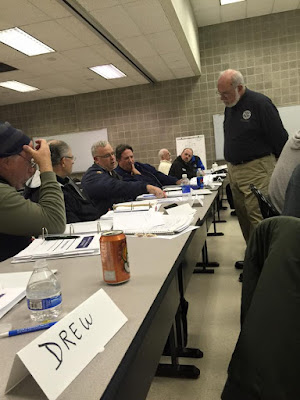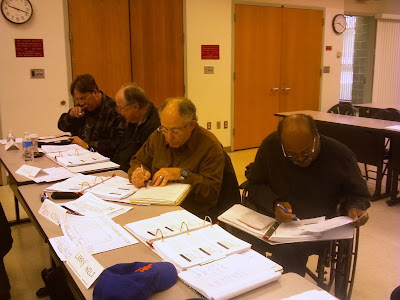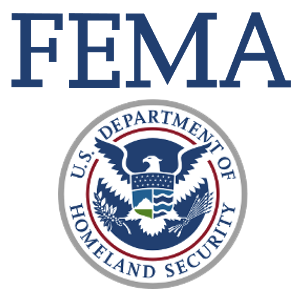Posts Tagged ‘emcomm’
 We’ve Got Some Explaining to Do
We’ve Got Some Explaining to Do
There was a fun interaction on twitter the other day about how we represent amateur radio to the general public. It started with this tweet from @FaradayRF:
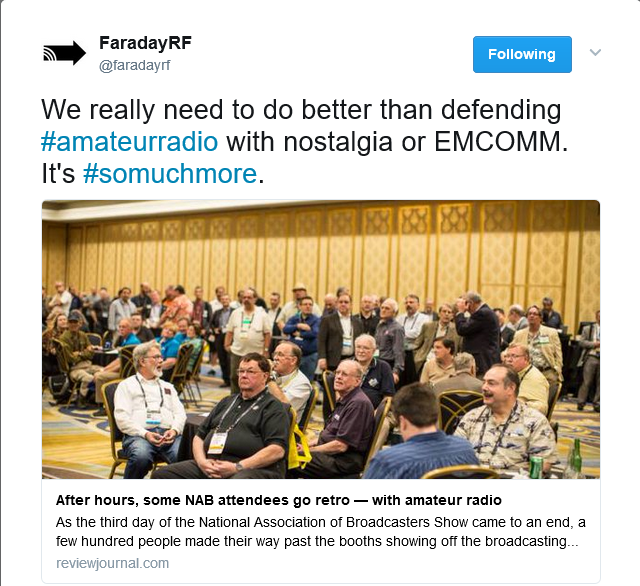 This refers to an article in the Las Vegas Review-Journal newspaper where the author decided to use the theme of “ham radio is retro” to tell the story of a ham radio gathering at NAB. I really hate it when ham radio gets positioned as “old technology” in the world of awesome wireless stuff. Clearly, some of our technology is dated, but the amateur service includes lots of new technology and experimentation. (Actually, the tone of the article was very positive, so we shouldn’t complain too loudly.)
This refers to an article in the Las Vegas Review-Journal newspaper where the author decided to use the theme of “ham radio is retro” to tell the story of a ham radio gathering at NAB. I really hate it when ham radio gets positioned as “old technology” in the world of awesome wireless stuff. Clearly, some of our technology is dated, but the amateur service includes lots of new technology and experimentation. (Actually, the tone of the article was very positive, so we shouldn’t complain too loudly.)
So I replied, along with a few other folks:
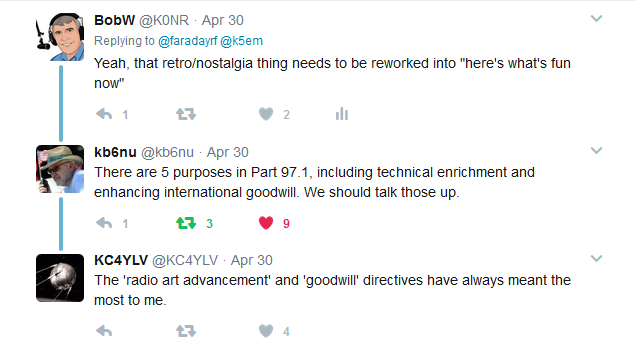 So KB6NU and KC4YLV took the discussion back to good old Part 97 of the FCC rules. (You ever notice how often radio hams like to quote Part 97? It’s right up there with the U.S. Constitution and the Declaration of Independence.) I tried to recall from memory the five things listed in 97.1 as the Basis and Purpose of the Amateur Radio Service, but failed.
So KB6NU and KC4YLV took the discussion back to good old Part 97 of the FCC rules. (You ever notice how often radio hams like to quote Part 97? It’s right up there with the U.S. Constitution and the Declaration of Independence.) I tried to recall from memory the five things listed in 97.1 as the Basis and Purpose of the Amateur Radio Service, but failed.
I had to look them up, so I’ll save you the trouble and list them here. Actually, I am going to provide the KØNR Abbreviated Version (go here to see the full text):
Part 97.1 Basis and Purpose of Amateur Radio
a) Voluntary public service, including emergency communications
b) Advancement of the radio art
c) Advancement of communication and technical skills
d) Expansion of trained radio/electronics enthusiasts
e) Enhancement of international good will
These five things are still relevant and are being pursued today. Not all radio amateurs contribute to every one of these but as a group we are doing these things. The good news is that many non-hams do understand the When All Else Fails aspect of ham radio…most have had their cellphone become a useless brick during major incidents. Items b, c and d are all about learning new things, building skills and expanding the number of radio hams. We should talk more about that. Enhancing international good will may seem a bit quaint but this crazy world can always use another dose of that.
Part 97 does leave out one thing that is the ultimate attraction and, in fact, the universal purpose of ham radio:
To Have Fun Messing Around with Radios.
73, Bob KØNR
The post We’ve Got Some Explaining to Do appeared first on The KØNR Radio Site.
 Matthew
Matthew
Earnest prayers that Matthew leaves you as un-battered and un-bruised as possible - AND that all your antennas stay up in the air.
Be safe; and have those batteries charged and those "Go Kits" locked and loaded!
And special prayers go out for our friends in the Carribean nations who are dealing with the aftermath.
72 de Larry W2LJ
QRP - When you care to send the very least!
 Matthew
Matthew
Earnest prayers that Matthew leaves you as un-battered and un-bruised as possible - AND that all your antennas stay up in the air.
Be safe; and have those batteries charged and those "Go Kits" locked and loaded!
And special prayers go out for our friends in the Carribean nations who are dealing with the aftermath.
72 de Larry W2LJ
QRP - When you care to send the very least!
 LHS Episode #162: Mumbo Gumbo
LHS Episode #162: Mumbo Gumbo
 Hello there and welcome to the latest installment of Linux in the Ham Shack. For your listening pleasure this fortnight, we have information on politics in the ARRL, opportunities for kids to participate in ham radio and FEMA, adventures in WSPR, a lost Atari 2600 ham radio app, a quick review of SolusOS and much more. Please enjoy.
Hello there and welcome to the latest installment of Linux in the Ham Shack. For your listening pleasure this fortnight, we have information on politics in the ARRL, opportunities for kids to participate in ham radio and FEMA, adventures in WSPR, a lost Atari 2600 ham radio app, a quick review of SolusOS and much more. Please enjoy.
73 de The LHS Crew
 LHS Episode #157: Canada Goes Dark
LHS Episode #157: Canada Goes Dark
 Hello, everyone! Welcome to the latest installment of Linux in the Ham Shack. Today your hosts discuss a new, incredibly inexpensive single-board computer, an ARRL contest slated to last all of 2016, politics vs. emcomm, a re-written DOS-based contest logger and much, much more. Thanks as always for tuning in and we hope you have a safe and happy holiday season.
Hello, everyone! Welcome to the latest installment of Linux in the Ham Shack. Today your hosts discuss a new, incredibly inexpensive single-board computer, an ARRL contest slated to last all of 2016, politics vs. emcomm, a re-written DOS-based contest logger and much, much more. Thanks as always for tuning in and we hope you have a safe and happy holiday season.
73 de The LHS Crew
 AUXCOMM
AUXCOMM
All I can say is, "Wow!". This course was fantastic and re-awakened a lot of the training that I received when I was a Communications Officer with Middlesex County OEM back in the 80s and 90s. And a lot of things have changed since then, of course, and hopefully, I absorbed them like a sponge.
The course, which spanned some 20 hours, was expertly taught by Hank Koebler N3ORX and Jim Millsap WB4NWS. If I were to go into the experience which make these two fine gentlemen qualified to teach this course, it would probably occupy the next 5-10 blog posts. Suffice it to say that we were very fortunate enough to be taught by two experts with regard to Amateur Radio and EMCOMM.
The class went by quickly, and was never boring. Jim and Hank kept it interesting and, if I may dare say, fun. The pace was quick, but with enough time given to take in all the key and necessary aspects of what was being taught. There were ten units (I hate to call them "lectures") that were broken up by plenty of exercises where we had to identify resources, come up with communications plans, and then submit them for approval. This was followed by one last "Final Exam" or final planning session which brought together everything that we had learned up to that point, In addition, throughout the class, we learned the correct procedures for filling out the necessary ICS paperwork that accompanies all these kind of events.
I must admit that after the first day, my head felt like it does after the first day of Dayton Hamvention, busting to the seams with sensory overload. But it was all good, and by the second day, I think everyone returned in the morning feeling a bit better and just a tad more comfortable with their EMCOMM skills.
The course built upon the education we received from those online FEMA courses that we all took on the Incident Command System, the National Incident Management System and the National Response Framework. It expanded upon that and throughout the class, decorum, attitude and etiquette were accented.
It does not do any good for the name and face of Amateur Radio, for uninvited, untrained, undisciplined "know-it-all cowboys" to show up to an emergency with an attitude that Amateur Radio is there "to save the day". That attitude, along with "Hey, lookie here at all my latest and greatest gear" is most assuredly going to get you escorted off the scene with a firm admonition to never return.
The keys to a successful blend of Amateur Radio and Disaster Response are training, decorum, the willingness to help with ANY situation (not just communications), and above all, professionalism. The willingness to blend in, get the job done with a minimal mount of attention or hoopla to yourself or the Amateur Radio Service, are what is needed. In fact, if you follow those guidelines, the Amateur Radio Service and Amateur Radio operators WILL come out smelling like a rose, and will be asked to come back on a continual basis.
To all Amateur Radio ops who read this blog that are interested in Public Service and Amateur Radio EMCOMM - I heartily urge you to go to your Town/City, County and State RACES/ARES leadership team to request them to have this AUXCOMM class brought to your state. Regardless of your level of experience, you are going to enjoy this class and will learn things that you never knew before.
72 de Larry W2LJ
QRP - When you care to send the very least!
 Long night
Long night
Description:
This class is designed for those auxiliary emergency communicators and groups who volunteer to provide backup emergency radio communications support to public safety agencies. Typically, this includes amateur radio and Radio Emergency Associated Communications Team (REACT) communicators, but may include other volunteer emergency communicators.
Volunteer emergency communications operators/groups, using amateur radio, have been providing backup communications to public safety for nearly 100 years. Event planners, public safety officials, and emergency managers at all levels of government utilize their services. Often, amateur radio services have been used when other forms of communications have failed or have been disrupted. Today, nearly all the states/territories have incorporated some level of participation by amateur radio auxiliary communication operators into their TICPs and SCIPs.
This course focuses on auxiliary communications interoperability, the relationship between the COML and the volunteer, emergency operations center (EOC) etiquette, on-the-air etiquette, FCC rules and regulations, auxiliary communications training and planning, and emergency communications deployment. It is intended to supplement and standardize an operator’s experience and knowledge of emergency amateur radio communications in a public safety context.
It's a two day event, held over the weekend of October 24th and 25th at the Middlesex County Fire Academy. Looks to be interesting. My registration was received and accepted pending my sending in the certificates of completion, which I sent in this morning.
The FEMA courses were comprehensive in scope. Each was designed to be completed in about 3 hours and I came in slightly under that amount of time - maybe two and a half hours or two hours and forty five minutes each.
I crammed two in last night (which wasn't wise) as each evening for the rest of this week is booked with other activities. I was pretty bleary eyed for that last exam, but was pleased when I got the e-mail that I passed.
FEMA offers a lot of free, on-line independent study courses. You can look them up at https://training.fema.gov/is/crslist.aspx?all=true
72 de Larry W2LJ
QRP - When you care to send the very least!
